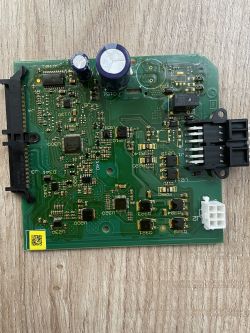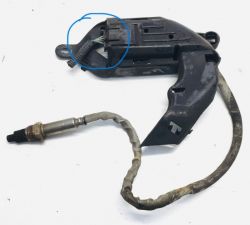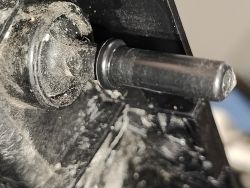Hello everyone, I have a 2018 Peugeot 3008 - 2 l diesel - like most users, I have a problem with the AdBlue tank. I dismantled the tank, disassembled all the electronics and measured the parameters. In the non-removable part, I inserted a 10kohm resistor on the yellow wires from the heating plate. After measuring the parameters, the rest seems to be good, the only difference in my case is in the non-removable part, it is on the black plug from the fuel level, because this plug has four cables and not three, but after the measurements it seems to be good. After assembling the tank to the car and starting it, I noticed a communication error and, of course, a problem with the pressure. The only strange thing is that the computer shows zero bars, not four as before. My problem is that after unplugging the plug from the J3 board on the heating elements such as Pump - valve - battery, the heating sensors show me different parameters than those shown by the colleague from the post above, namely my indications are as follows:
A- heating plate Urea - 1.3 ohm
B- Short urea cable - 27 ohm
C- Green circuit - 51 ohms
D- yellow circuit - 49 ohms
E- circuit Blue - 12 ohms
F- white circuit - 13 ohms
G- Cable from the tank to the injection 0.0 ohm
And the indications - Mako 122
- Before a detailed description, I put the correct resistance values of all circuits here:
A) plate heating the urea in the tank (there is no direct access to it) - 1.3 Ω
B) cable connecting the urea filter with the pump assembly (approximately 30 cm long) - 27.0 Ω
C) "green" circuit, pump heating - 55.0 Ω
D) "yellow" circuit, solenoid valve heating - 55.0 Ω
E) "blue" circuit, urea battery heating - 212.0 Ω
F) "white" circuit, heating the elbow at the point where the urea exits the tank - 22.0 Ω
G) heating circuit of the tube between the tank and the injector (about 1.5 m) - 2.5 Ω
And now I don`t know if these parameters can differ, because I had four cables on the fuel level plug, and in most of you there are three, and after disassembling the entire pump plate and all the elements, it seems to me that it is the same plate, only with the difference in the fuel plug, is it possible that two or all of the heating sensors are broken at once? I checked the pump according to the instructions in the video and everything seems to be fine, it draws water and the pressure also seems to be good.
Please help. Thank you.





